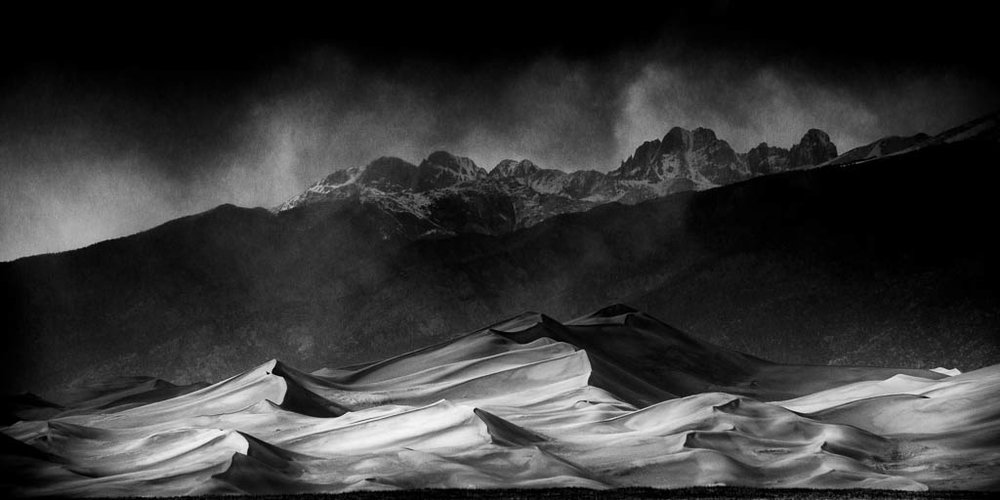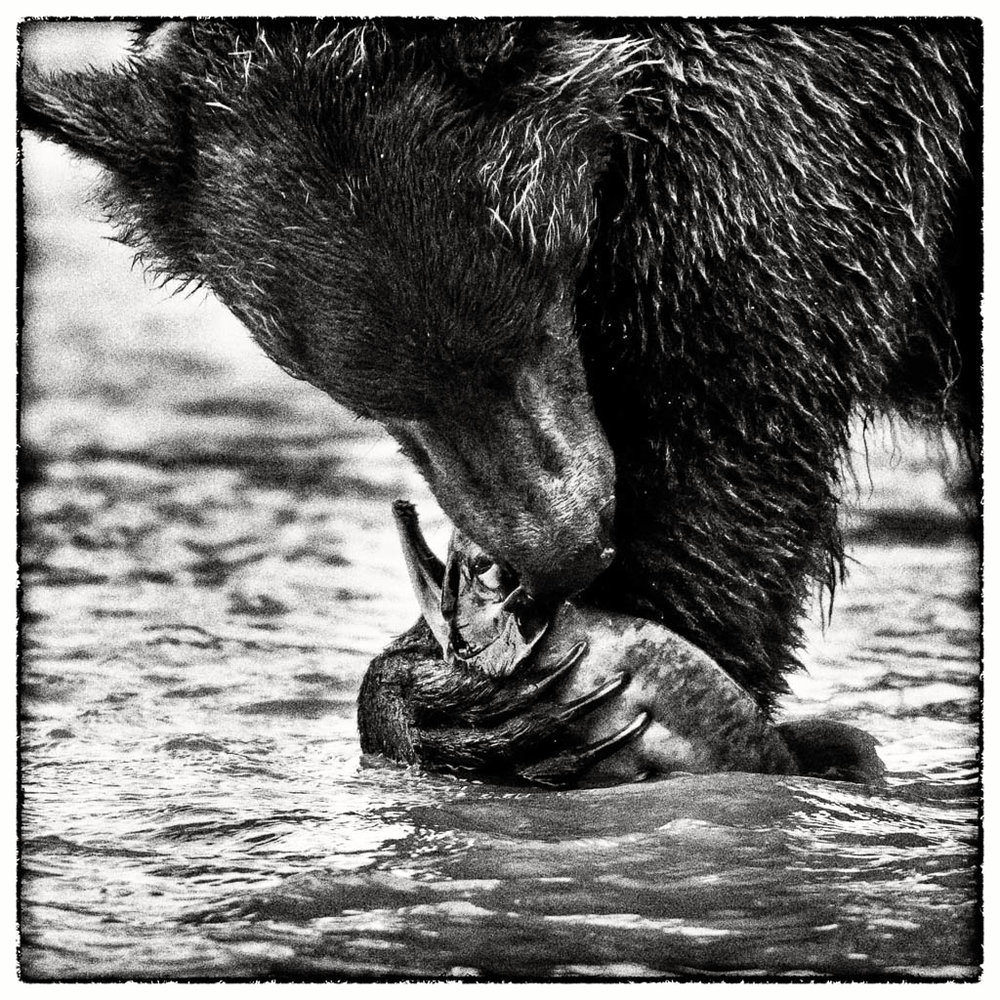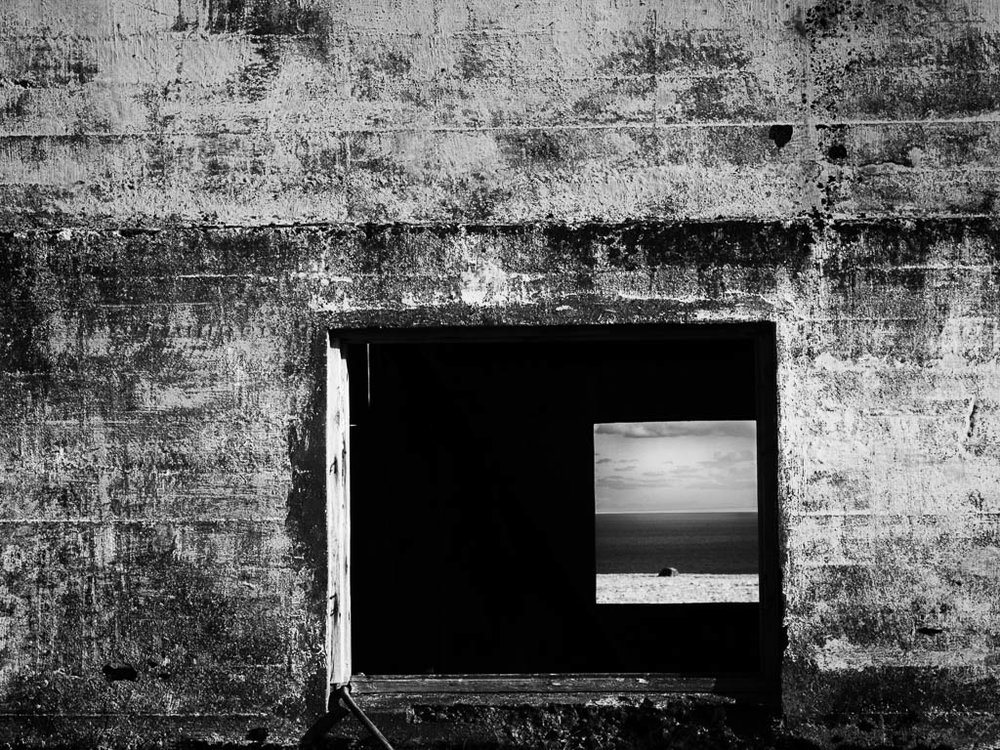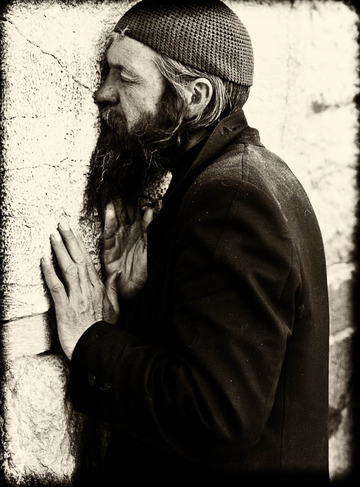by Les Picker
Images by Les Picker
I come from a lineage of photographers. As an immigrant my grandfather made his living by photographing people on the streets of New York - usually mothers and children - and selling them the black and white prints a few days later after he developed them in his home darkroom. I can still remember the magic of seeing those ghostly shapes begin to appear under the red light in his darkroom.
My father was an advanced amateur color photographer, and of his three brothers one was a portrait studio photographer, one a camera repair technician, and one a photo retoucher and graphic artist. As a child, I often would hear one of them acknowledge that the toughest photography of all was black and white. I didn't comprehend that then, but I've come to believe - evolved might be a better word- that B&W is the most difficult form of photography.
With color photography, you have... well... COLOR! There is little left for the viewer to imagine. What you see is what you see. I'm not at all saying that color photography is easy. Far from it. I photograph and sell color landscapes and wildlife prints all the time. But what color does is release you, the photographer, from the burden of having to interpret the scene for the viewer. Let me tell you, that is an enormous burden for the B&W photographer.
With B&W you do not have a color palette to work with. All you have are two things, light and shadow, black and white. Oh, yeah, and about a zillion shades in between.

I have a theory about B&W photography and from my layman's readings in neuropsychology I think there is support for this. I believe that B&W imagery makes the brain work harder, both for the photographer and, more importantly for our viewers. And that very work is what engages the viewer, what forces them to confront the image. They have to delve a bit deeper, to decipher the tonality, to create a cognitive structure for it, all based on life experiences that scream COLOR!
Good B&W imagery also does not always give the viewer everything they need for a coherent reality. The side of a face put into deep shadow forces the viewer to create a visual structure for it that is consistent with their experience. They know the face is there, but...
B&W challenges the viewer to make sense of a uniquely nonsensical reality. We look at a color landscape and it makes perfect sense to us. Why? Because that is how we perceive it. Now take that same image in B&W and you are essentially creating an alternate reality that doesn't harmonize with the viewer's visual reality. Our world is full of color. It is rarely monotone.

So what does the viewer actually have to do? How do they make sense of a B&W landscape? They have to work at it. They have to look deeply into it, discerning tones that indicate light and shadow. They must unconsciously imbue the image with a logical structure that transcends color. I believe it is that very engagement that bonds the viewer strongly to the image itself, whether in a positive or negative way.
That is why most people, when asked, tend to ascribe more "drama" to B&W images. That is why collectors are so passionate about B&W prints. B&W prints are not merely the representation of reality that confirms our daily perceptions. B&W prints forces people to dig into their own reality structures, and who ever knows what lurks in those depths?
 Our brains are a bouillabaisse of cognition, emotion, sensory inputs, memories, trauma and exquisite joy. When a viewer studies a B&W image, when they dig deep into their psyches to make it fit into some cognitive structure, who knows what else they might pull out? I suspect lots of emotions, memories, whatever. So what they see is not a simple scene. They see something with which they viscerally connect.
Our brains are a bouillabaisse of cognition, emotion, sensory inputs, memories, trauma and exquisite joy. When a viewer studies a B&W image, when they dig deep into their psyches to make it fit into some cognitive structure, who knows what else they might pull out? I suspect lots of emotions, memories, whatever. So what they see is not a simple scene. They see something with which they viscerally connect.
I am not saying that every B&W image does this, nor that no color images do it. Some B&W images are appreciated for simple things like their patterns or texture or scale, for example. But the really great B&W images are emotional, evocative. They may create instant dislike or passionate appreciation but rarely passivity. When I look at Dorothea Lange's B&W image of the Depression era mother with her two young girls' faces hidden in her neck, I feel empathy and sadness. In the same way, even as I took this image, I could feel the religious devotion of this man praying at Jerusalem's Wailing Wall.

As a novelist (check me out on Amazon...please!) I know that once I release a book it is no longer mine. In fact, that is what I pray for. I want my readers to figure out for themselves what the book means for them. I put my narrative out into the vast ocean of personal experience and expect them to fill the sails.
The same holds true for B&W photography, at least to my way of thinking. I may know what the image represents, but that's only true for me. It's up to my viewers to interpret it for themselves. And I'm always humbled by what they see in it that I would never have imagined.
One final bias, and I say this admitting that I sell a lot of color prints. There is nothing in the photographic world like a B&W print. Period.

